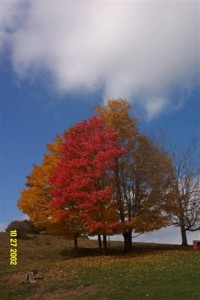The 5 Coolest Trees In Southern West Virginia
February 3, 2010When people come to visit West Virginia, a lot of them come for one reason: Trees.
Actually, that’s made up.
People think of all kinds of reasons to come, and trees are not on the list. White water rafting- check. Family reunions? Yes, absolutely. Trees: probably not.
Not specifically, anyway. Its more like the idea of trees that brings people to visit. Trees as a metaphor. They are simply the symbol of a simpler life; there can’t be too much wrong with a place that’s surrounded by acres and acres of trees.
Plus, trees do a lot of the convincing when it comes to the whole “get outside and see nature” thing. Sure, there’s the Utah desert, but they only have 2 different kinds of trees, more or less (that pine one, and that other one that looks like pine). We have more than 100.
Here are the 5 best ones…
Norway Spruce: The Norway spruce is just about the most elegant tree in the forest. One of the tallest, too. The Norway has long branches that curve gently upward as the branch extends away from the trunk. These could be the some of the worlds’ most perfect climbing trees.
Tulip Poplar: That’s right: I love the tulip poplar, and I don’t care who knows. So what if you have to clean up an average of one million leaves every fall? They’re big trees and they have an amazing secret: They’re not poplars! They’re actually a member of the magnolia tribe. And guess what? They’re not Tulips, either.
Sycamore: The Sycamore is the best way to tell if you’re getting close to a wild mountain river. It’s got that distinctive green, papery bark, and a large beautiful maple-like leaf that it leaves all over the river gorges of the state.
Sugar Maple: Maples are good for shade, wood, climbing, swinging, sleeping under, and just about everything else. The Sugar Maple also happens to be our state tree, so you get a tax credit if you plant one in your yard. That last point isn’t true, actually, but it should be. And the leaves turn bright yellow in the fall.
Royal Paulownia Tree: It’s big. It’s invasive. It’s got purple flower pods. It’s the Royal Paulownia tree, also known as the Princess tree. Everything about the tree is gigantic, from its leaves to its growth rate. It can grow thirty feet in three years! Concentrations are thicker where there was trade; the Paulownia was an ornamental before it went wild. The flowers, along with redbud, time perfectly with the arrival of spring.
This isn’t a definitive list. People have their own favorites. But these might be the five most widely seen and recognized. And, hey, Arbor Day is coming. Better know your trees.


